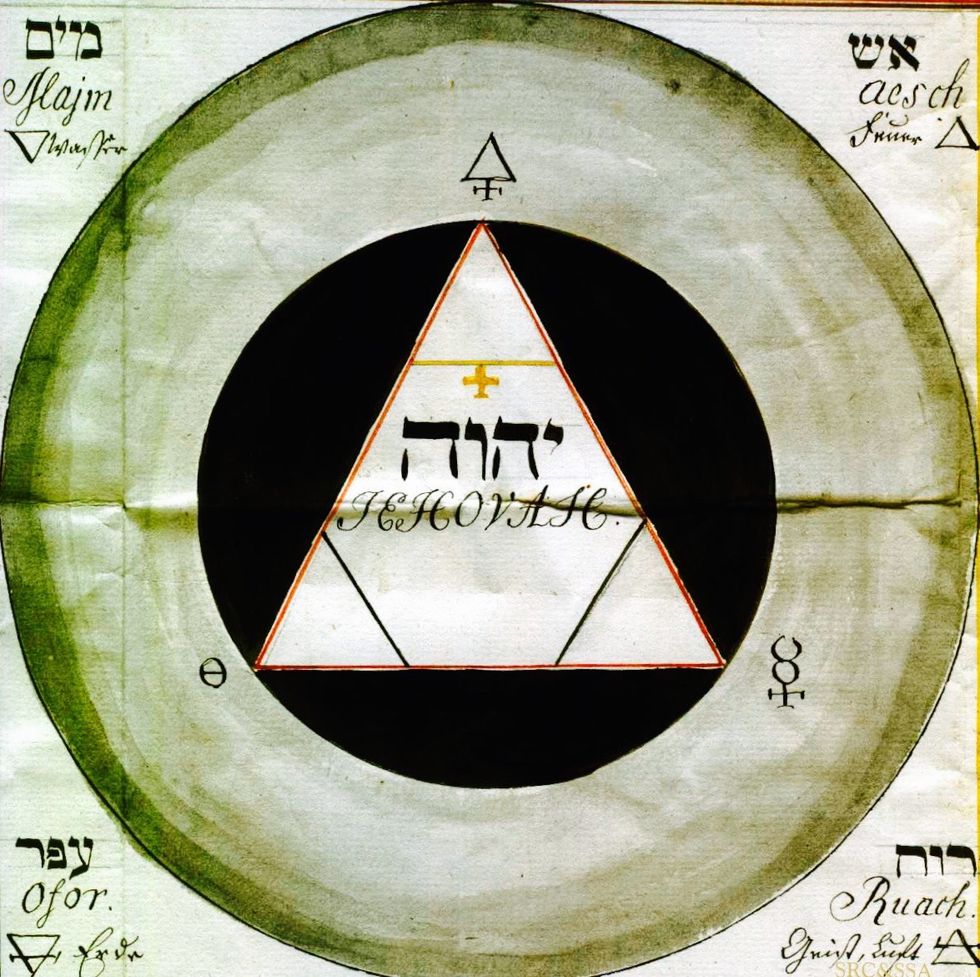While many people know of Gnosticism, few people can define it. In the past, those definitions have been broad enough to include radically diverse groups ranging from the Manicheans to the Mandaeans, which sets a scope so wide as to be useless. Another misconception plaguing our attempts to both define Gnosticism and judge its historical place dates all the way back to one our earliest sources Irenaeus and how he defined Gnosticism: as a heresy, which leached off and distorted the “true” Christianity. While no scholars subscribe to this view anymore, many still fall into the trap of declaring Gnosticism a broad monolith or else declaring it an aberration or at best an offshoot of an equally monolithic Christianity. This Brakkeseeks to correct. His thesis is then twofold: Gnosticism can be defined much more discreetly taking a stricter view of mythic similarities between works and takinga careful view athow Irenaeus himself defined Gnosticism( Brakke ismore hesitant to rely on other , later hierologists such as Epiphaniusciting “ their dependence on Irenaeus and the vague nature of the other sources for their information” (Brakke 45)) Also that Christianity was much more fluid and personalized than most previous scholars allege . In the five chapters of this work he spends the first defining his thesis, the second and third making a case for the existence of Gnosticism and how to define it to give its proper scope, and the fourth and fifth illustrating those many verities of Christianity and how said verities used rhetoric and social practices to differentiate themselves from one another and often to prove themselves the one true Christianity
In his first section, Brakke, in addition to deflating Irenaeus’ model of heresy he also examines and critiques the “varieties of early Christianity “or “horse race “model. In this there is not one Christianity, there are several that compete with each for dominance, “jockeying” for position in the hearts and minds of the public. Brakke identifies two problems with this view: first that it lends it makes value judgements to explain why certain groups won out; secondly, it belies the rigidity of those categories, most importantly that of “proto-orthodoxy”. Instead Brakke furnishes his own model, namely that religious groups are formed though hybridity, the borrowing of idea from diverse group of religious thought which centers the idea that early Christianity is an amorphous phenomenon affected by outside schools of thought (Hellenism for example). Rhetoric which is key for creating the necessary duality of in-group and “other” for a fixed school of thought and ethnicity which played an important part of identity formation of Christianity especially given the discussion of ethnicity during the period (this factor is discussed rather briefly and in practice functions as an extension of the rhetoric category). Lastly Brakke claims rigidity cannot be disregarded entirely due to the unique social practices groups use to define themselvessuch as rituals and excommunication
In the second section Brakke gives his definition of Gnosticism which he derives from a strict reading of Irenaeus. He disagrees with scholars like Meyers who claim Gnosticism can be defined by repeated motifs such as personified wisdom, secret salvific knowledge or the presence of an ignorant creator god .(Brakke 24) Instead , Brakke takes the central gnostic myth partially described by Irenaeus and found in full in The Secret Book of John and considers the works that contain this myth ( he excludes mere variations of this myth such as the works of Valentinus and works like On the Origin of the World)as being the “Gnostics” Irenaeus mentioned in his writings (Brakkeis careful to note that Irenaeus sometimes used the word Gnostic to highlight a broader trend of exoteric religious elitism that he also fought against (c.f 35)). Only these few books Brakke maintains can be considered a discreet religious group. This is key for his model as being able to responsibly claim these writings as belonging to a single group means he can use these texts to try a decipher the unique social rituals the Gnostics used to differentiate themselves from rival Christianities.
In the third section Brakke gives a basic outline of the central Gnostic myth. After discussing the slight differences between these myths as portrayed in the various Gnostic texts,
Brakke briefly discusses the possible origins for the idea of a higher and lesser creator god (interestingly pointing out that “proto-orthodox” Christians often viewed the Logos mentioned in the gospels as the creator god working in tandem with the ineffable creator god (60)). Brakke also mentions the range of opinions regarding if non-gnostic Christians would be saved (Revelation of Adam claims the constitute a third class between saved and unsaved while The Gospel of Judas rejects them outright) before entering a discussion of the possible insights we can glean from the texts on what rituals the gnostic may have engaged in, supplying two.
The first is the famous baptismal rite of the five seals mentioned in The Three Forms of First Thought. While the text is relatively clear liturgy Brakke combines this notion with the idea mentioned in Zostrianos baptism is a mean for becoming divine, suggesting that baptism related to an ascent in gnostic teaching. Also, found in Zostrianos is the idea of ritual meditation on the cosmos to achieve perfection which Brakke suggests may be another ritual.
In section four Brakke begins the second part of his thesis: the discussion of the amorphous nature of early Christianity and the techniques used to crystalize the boundaries of Proto- orthodoxy. As such, He uses case studies: Three early Christian teachers they syncretized and rejected elements of Proto-orthodoxy and Gnosticism. Marcion, for example, agrees that is a lower creator god separate from a higher ineffable god, however Marcion’s demiurge isn’t malicious just too legalistic to grant obtainable salvation. Thus, Jesus comes down from the ineffable to grant a possible salvation. As such Marcion rejected Jewish scripture as the work of that legalistic god. Marcion could form a sizable community of converts. However, after attempting to push his views at a meeting of church teachers, ties had broken him and the rest of the Roman churches and each withdraw their support from the other. This last part is key as it shows that Proto-orthodoxy didn’t deal with heresy with violent suppression as previously alleged but by withdrawing hospitality and funds. Valentinus provides another interesting example. He combined teachings of Gnosticism with the teachings of Proto-orthodoxy. To create a moderate representation of both. Thus, the world is still negative but it’s no longer a trap for the soul, Jesus is now the means with Gnostic salvation, and non-Gnostic Christians are given a form of salvation. With the example of Valentinus (though Brakke merely implies this) we see an example of how hybridity is key to making a thriving religion. Finally, in Justin Martyr Brakke gives a compelling explanation of Justin’s line of thinking: how his nervousness about the excess of Christian diversity about gospel verses concerning false teachers lead him to formulate the concept of heresy. This formulation of defensive strategies is what concerns the final section of Brakke’s argument.
In the brief final sectionBrakke mention three strategies Christian teachers used to persuade people of their claim to true Christianity: claims of Apostolic secession, expanding on Justin’s claims of heresy (as Irenaeus did) and appeals to one’s personal authority as a teacher. By use of the foundation of tradition, the authority of popular teachers and their doctrines and the use of heresiology to “other” outside doctrines, the first steps of orthodoxy were taken.
This text is recommended for those familiar with Gnosticism as it expects familiarity with basic concepts. The second and third chapters are particularly recommended for students of Gnosticism due to Brakke’s unique definition of Gnosticism, the fourth recommended for those interested in early Christianity. However, the quality of argument and writing are consistent throughout.




 man running in forestPhoto by
man running in forestPhoto by 





 "I thought you knew what you signed up for."
"I thought you knew what you signed up for." man and woman in bathtub
Photo by
man and woman in bathtub
Photo by  four women sitting on black steel bench during daytime
Photo by
four women sitting on black steel bench during daytime
Photo by  Uber app ready to ride on a smartphone.
Photo by
Uber app ready to ride on a smartphone.
Photo by  woman in red tank top and blue denim shorts standing beside woman in black tank top
Photo by
woman in red tank top and blue denim shorts standing beside woman in black tank top
Photo by  blue marker on white printer paper
Photo by
blue marker on white printer paper
Photo by  welcome signage on focus photography
Photo by
welcome signage on focus photography
Photo by  woman in white and black striped long sleeve shirt lying on bed
Photo by
woman in white and black striped long sleeve shirt lying on bed
Photo by  pink pig coin bank on brown wooden table
Photo by
pink pig coin bank on brown wooden table
Photo by  person holding iPhone 6 turned on
Photo by
person holding iPhone 6 turned on
Photo by  person holding pencil near laptop computer
Photo by
person holding pencil near laptop computer
Photo by  person slicing vegetable
Photo by
person slicing vegetable
Photo by 
 woman covering mouth with sweater
Photo by
woman covering mouth with sweater
Photo by  person holding remote pointing at TV
Photo by
person holding remote pointing at TV
Photo by  a woman with her arms raised in a crowd of people
Photo by
a woman with her arms raised in a crowd of people
Photo by  "Shocked disbelief: '95% of the population is undateable?'"
"Shocked disbelief: '95% of the population is undateable?'"








